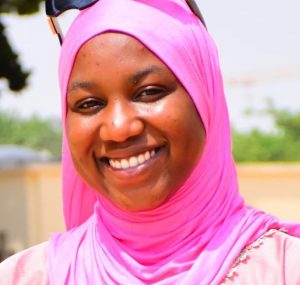Singapore is on track to face its worst dengue outbreak in history

More than 14,000 dengue cases have been reported in the city-state since the start of the year, according to the National Environment Agency (NEA). The total number for the whole year is expected to exceed the 22,170 cases reported in 2013 — the largest dengue outbreak in Singapore’s history, the agency said.Dengue is a viral infection transmitted by the Aedes mosquito, the same insect responsible for spreading Zika, chikungunya and yellow fever. It is commonly found in hot, wet regions of the tropics and subtropics during the rainy months.Only about 25% of those infected show symptoms, which include high fever, severe headaches, muscle and joint pains. Extreme cases can bring bleeding, breathing difficulties, organ failure, and potentially death.In Singapore, 16 people have died of dengue this year — twice the death toll of 2013.The warmer months from June to October are traditionally peak dengue season in the city state, due to accelerated development of the Aedes mosquito and the shorter incubation period of the Dengue virus.But this year, it has been particularly bad.Last week alone, 1,468 cases were reported, the third consecutive week case numbers have exceeded 1,000 — and the highest number of weekly dengue cases ever recorded in Singapore.In response to the soaring cases, the Singaporean government has stepped up checks to remove potential mosquito breeding habitats at public areas and housing estates. Over the past three weekends, about 6,900 premises have undergone inspection and vector control, according to the NEA.”The majority of mosquito breeding detected continues to be found at common areas of residential estates, premises and homes,” the NEA said in a statement on Thursday.And starting from July 15, the agency will increase fines for people who fail to take action to prevent mosquitoes from breeding both inside and outside their property. Mosquitoes are known to favor damp, dark corners and areas of stagnant water. Why is it so bad this year?Dengue cases have grown dramatically worldwide, increasing 30-fold in the past 50 years. There are an estimated 100-400 million infections each year, and about half of the world’s population is now at risk, according to the World Health Organization.Scientists say hotter, wetter weather brought on by climate change has created ideal conditions for female mosquitoes to lay their eggs. Not only are there more mosquitoes, but the rapid urbanization occurring in many Asian nations means that susceptible populations are living in closer contact with disease-carrying insects.Last year, the Philippines declared a national dengue epidemic in August. By the end of that month, 1,107 people had died of the disease, and more than 270,000 had been infected.In Singapore, experts believe a key reason for the surge in dengue cases this year is the return of an old strain of the dengue virus that has not been around for nearly three decades.There are four strains, or serotypes, of the dengue virus. In Singapore, DENV-2 has been the dominant strain since 2016. But starting from last year, the less common DENV-3 has been on the rise, according to Luo Dahai, associate professor of Infection and Immunity at Nanyang Technological University. “Considering the local outbreaks are usually caused by DENV1 and 2 in the past, the immunity built among the community residents against these DENVs may not be protective against the emerging DENV-3,” Luo said.According to the NEA, DENV-3 cases accounted for 48% of the dengue cases in February, almost double that of DENV-2 cases.”The rise in proportion of DENV-3 cases is of concern, as we have not had dengue outbreaks driven by DENV-3 in Singapore for almost three decades,” the NEA said.”This means that our population has lower immunity to DENV-3, and consequently a large proportion of our population is susceptible to DENV-3 infection.” it said.
Have lockdown measures made it worse?Another potential factor that worsened the dengue outbreak this year, Luo said, could be the lockdown measures imposed for coronavirus.In April, a second wave of infections broke out in Singapore among migrant workers living in packed dormitories, sending daily new infections from below 100 to above 1000 at its peak. To contain its spread, the government issued a stay-at-home order and closed down non-essential workplaces and schools. These restrictive measures, known as the “circuit breaker,” lasted from April 7 to June 1.”When more people stay at home all the days, there could be more residential mosquito breeding and more opportunities for ‘blood meals’,” Luo said.According to the WHO, the female mosquito is a daytime feeder. The peak biting periods are early in the morning and in the evening before dusk.The NEA said it had observed a five-fold increase in the incidents of mosquito larvae detected in homes and common corridors in residential areas during the two-month circuit breaker period, compared to the two months prior. “The highest percentage of mosquito breeding found in homes in the top five dengue cluster areas was 84%,” it said.CNN’s Helen Regan contributed to reporting.







